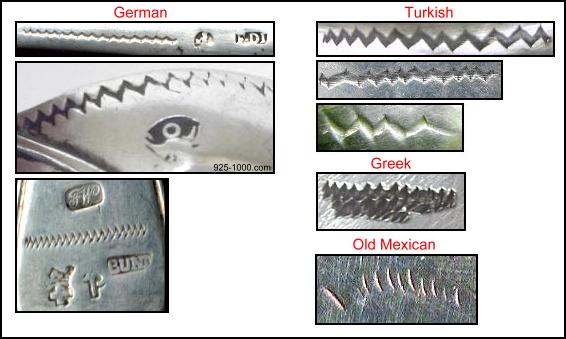The technique was explained to me many years ago by an old school European silver dealer. Don't know if it is right or wrong, but it sounds plausible.
He related that a special engraving tool was used. Don't know the proper silver related name for it, but in drypoint or mezzotint print engraving, it would be called a "rocker". The rocker is "walked" across the silver surface resulting in the zigzag and the raised flakes left in its wake are shaved off for assay testing.
If this is a workable method, it makes far more sense to me than someone patiently zigzagging back and forth with a straight graver or burin.
Regards, Tom
ps. just found this at ->
http://museosdevenezuela.org/Documentos ... tor2.shtml" onclick="window.open(this.href);return false;
my very limited Spanish tells me it explains the why, more than the how. But, if anyone can extract something more from it, please let us know.
BURILADA:
La "burilada" que efectuaban los oficiales del gremio de plateros denominados marcadores o contrastes, consistÃa en la muestra de metal que se extraÃa de la pieza utilizando para ello el buril. Mediante este procedimiento, era posible evaluar la pureza del metal empleado comprobando con ello su respectiva ley (de acuerdo a lo exigido en la mayorÃa de las ordenanzas, once dineros para la plata y veintidós quilates para el oro). La marca dejada por el buril o "burilada" es algo profunda y siempre en forma de zigzag, ella resulta asombrosamente escasa no sólo en la platerÃa venezolana sino también en otros centros hispanoamericanos particularmente importantes (1).
.
